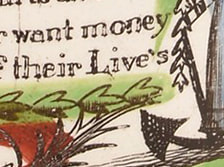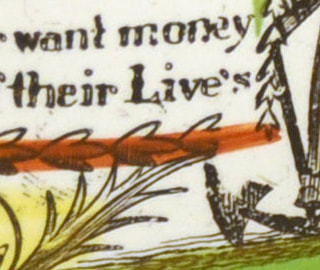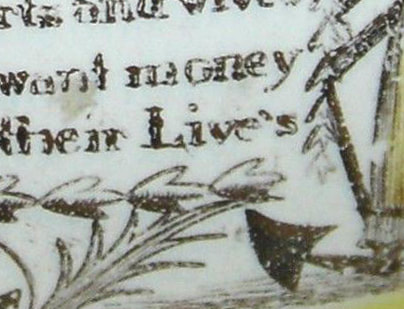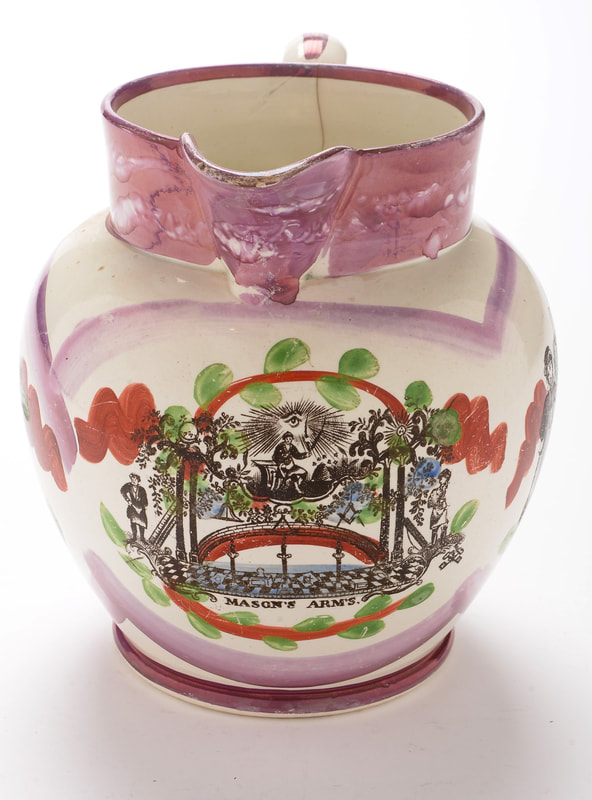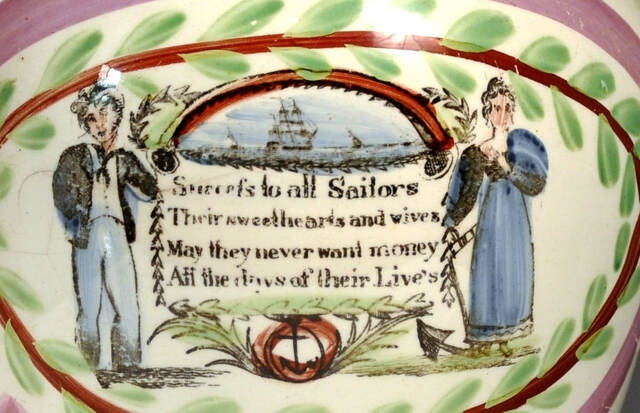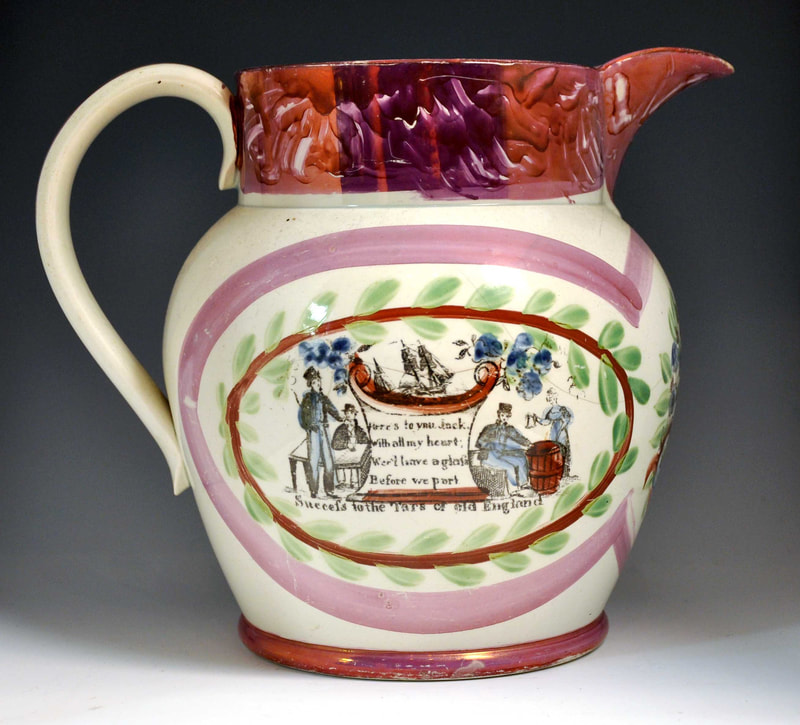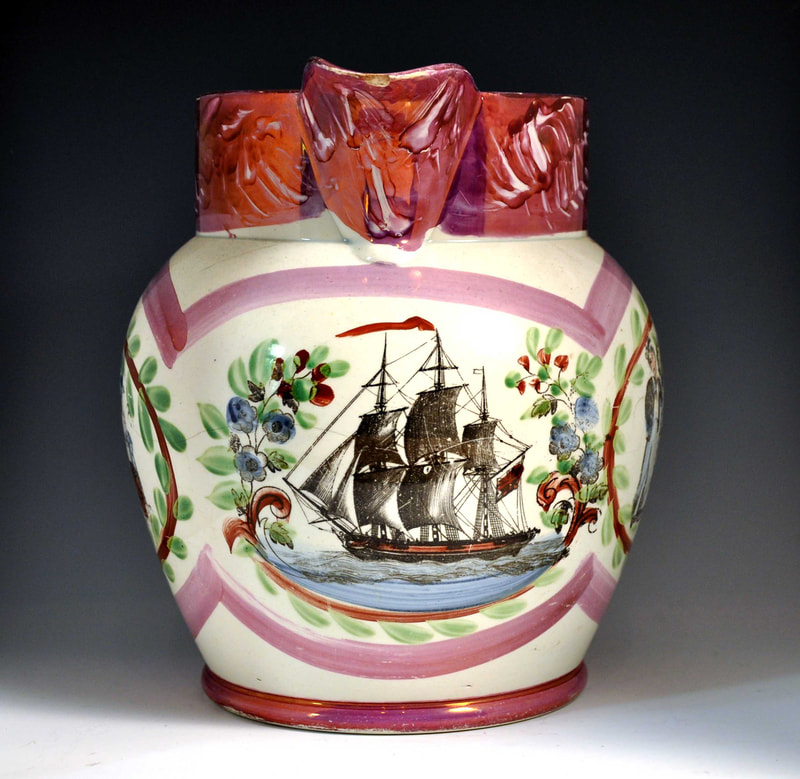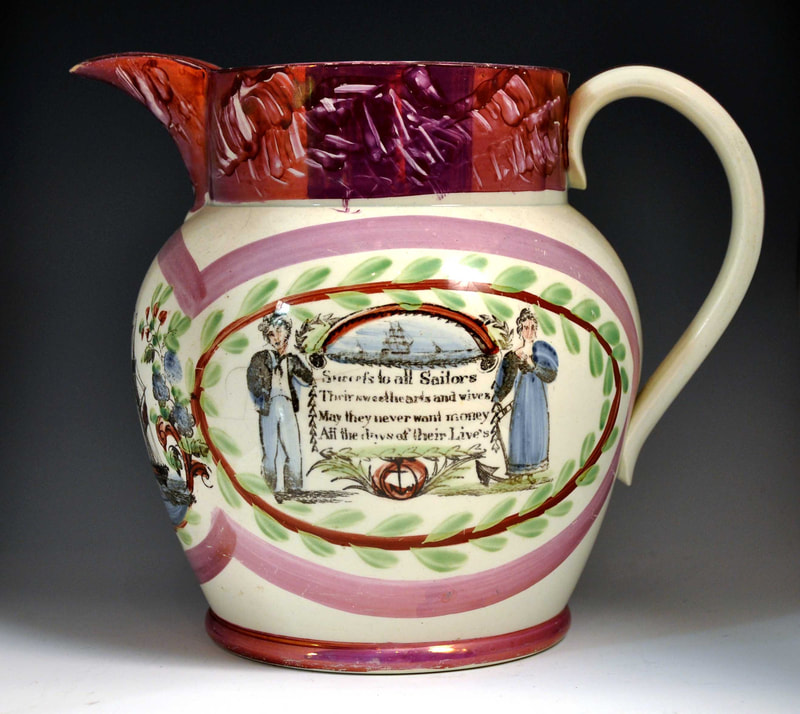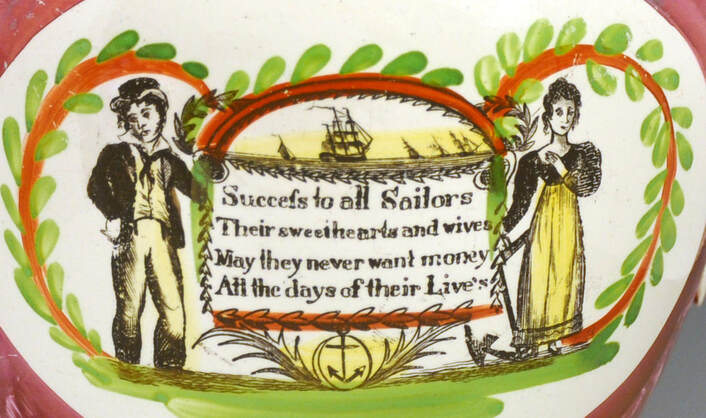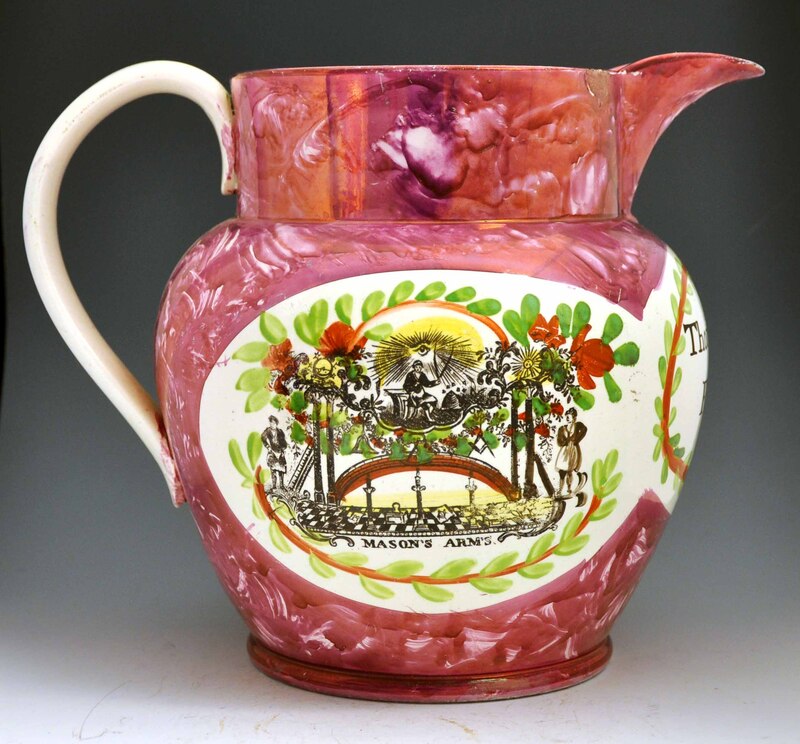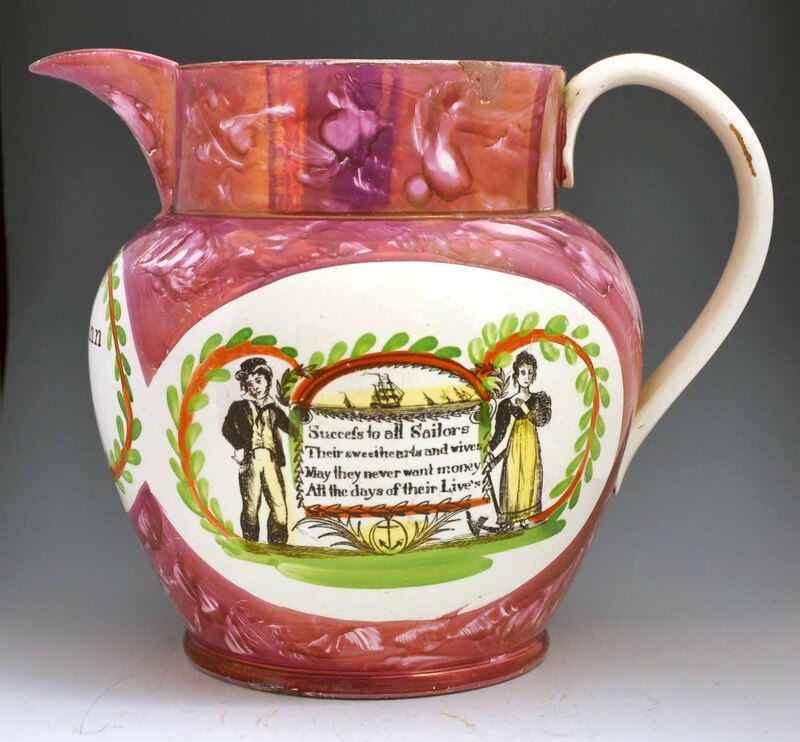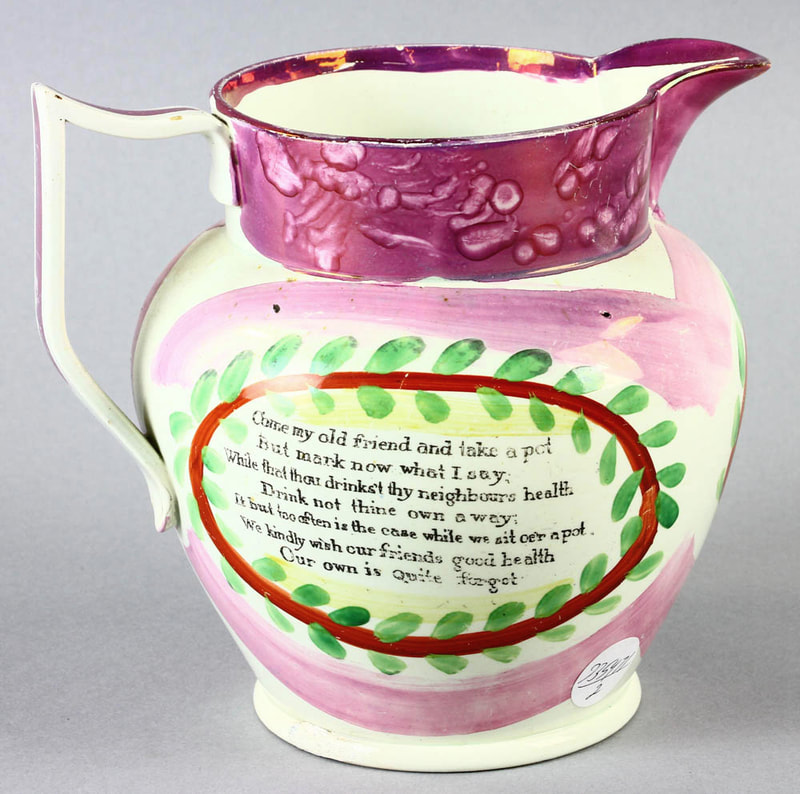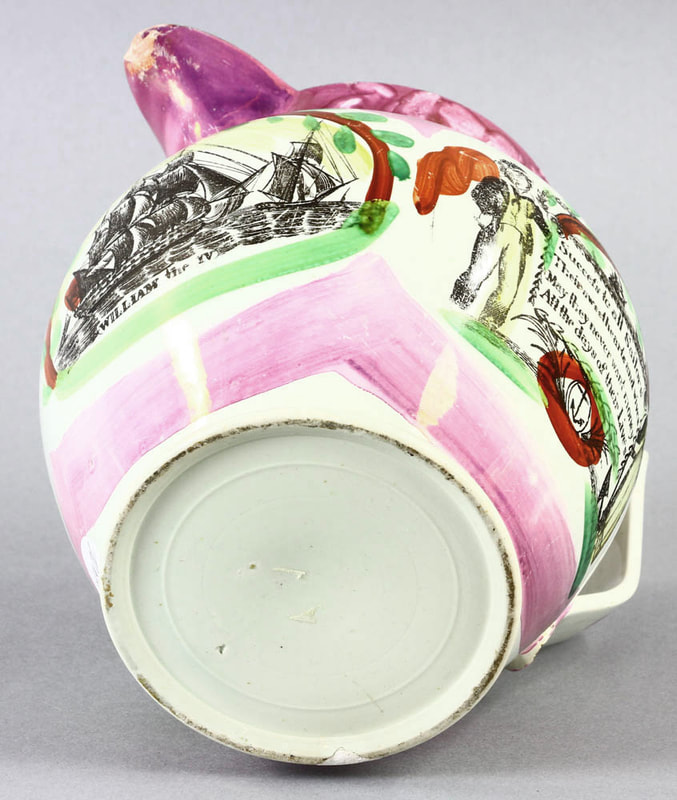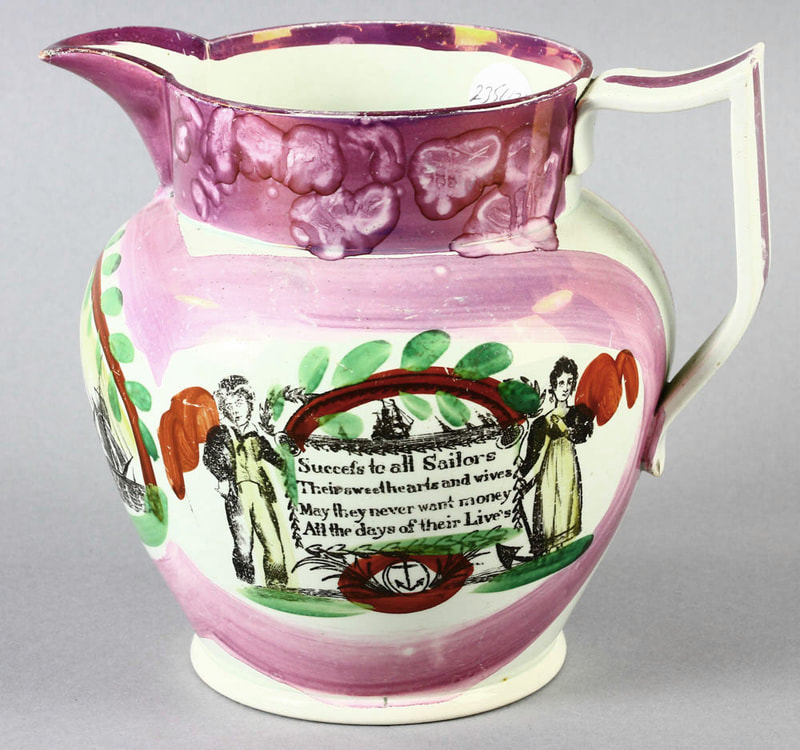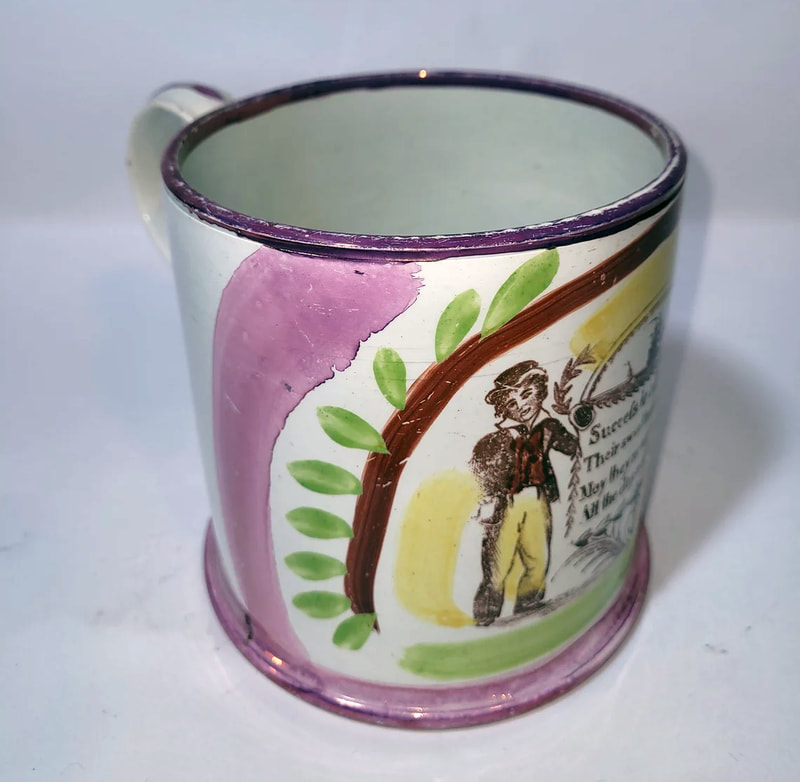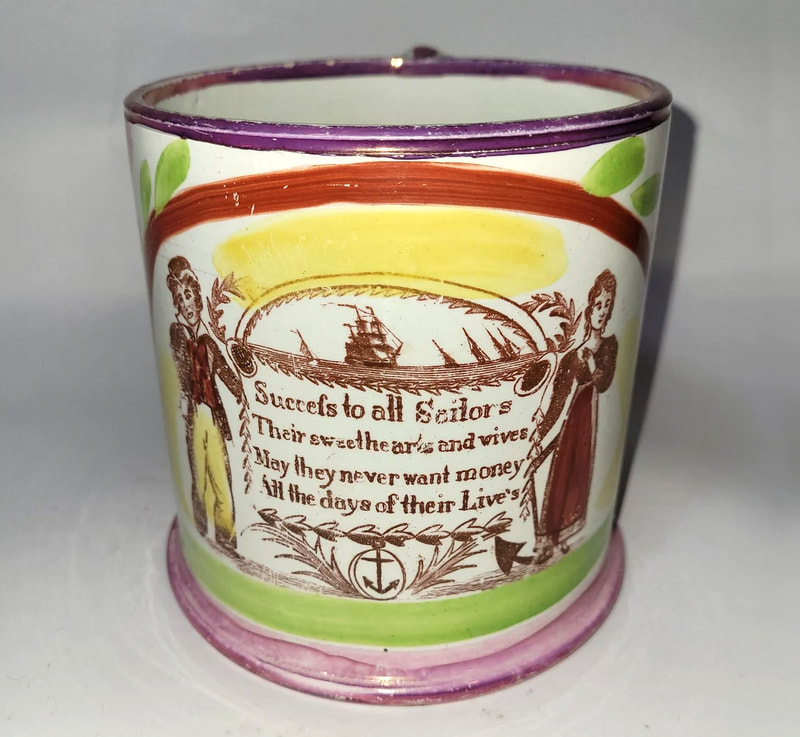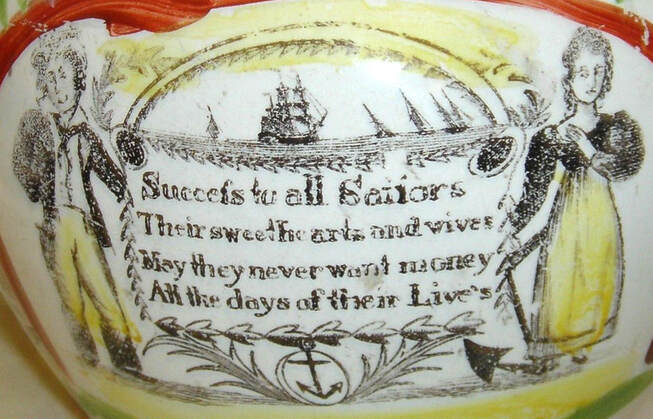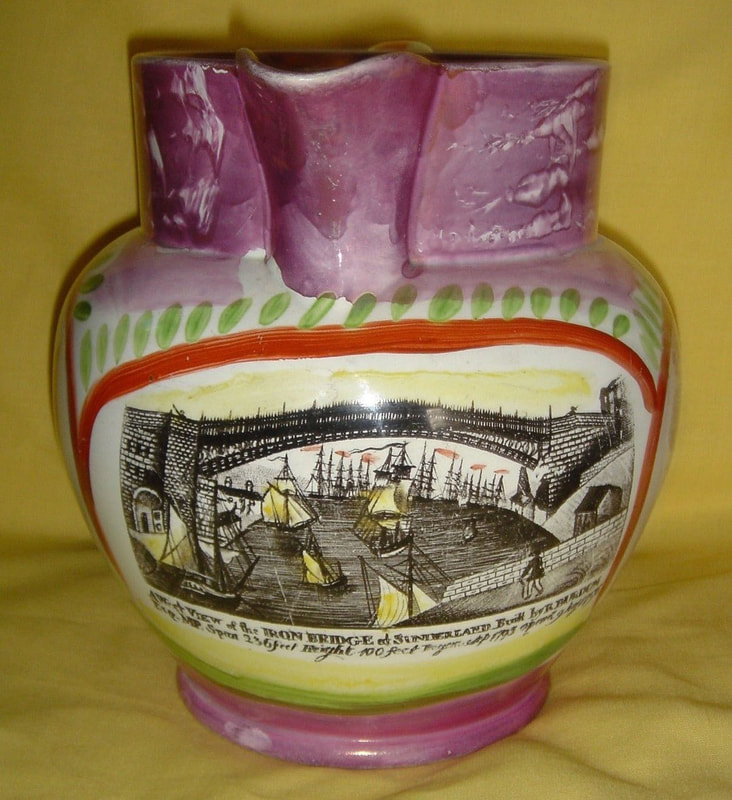Success to all sailors... – Tyneside potteries
All the transfers on this page share the same flaw, visible to a greater or lesser degree: a small scratch coming off the bottom right of the letter 'L' in 'Lives'.
Attributed to Robert Maling, Ouseburn Bridge Pottery, early 1830s
All the jugs below have similar decoration around the transfer. The Earl Grey transfer suggests that these were made c1832.
The jug below has a degraded imprint of the transfer. However, the blue enamel suggests it was made before 1835.
This jug below has a dated inscription for 1833.
An unusual jug with a square-shaped handle. The red squiggle enamel decoration around the transfer suggests it was made in the early 1830s.
A mug below with a nice crisp image of the transfer in dark brown.
Attributed to Robert Maling, Ouseburn Bridge Pottery, late 1830s
A jug with the later version of the bridge transfer with long masts in the background, thought to be made after 1838.
